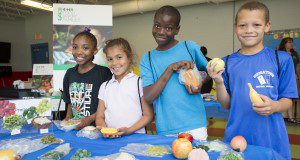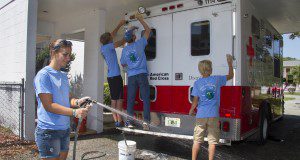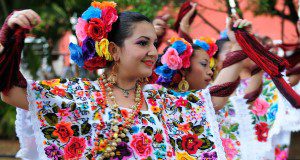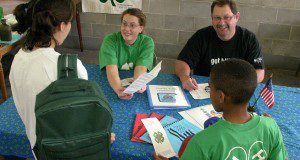The 4-H Citizenship Project offers the opportunity to help 4-H members relate all of their 4-H projects and experiences to the world around them. The 4-H Citizenship manuals will serve as a guide for 4-H Citizenship experiences. To be truly meaningful to the real-life needs and interests of your group, the contribution of volunteer leaders is essential. Each person, neighborhood, and community has individual needs that you can help your group identify. This 14-page major revision of Unit VII covers the “My World” project. Written by John Rutledge, Joy C. Jordan, and Dale Pracht and published by the UF/IFAS Extension 4-H Youth Development program.
https://edis.ifas.ufl.edu/4h021
Tag: Joy C. Jordan
Exploring Citizenship, Unit VI: My Government
The 4-H Citizenship Project offers the opportunity to help 4-H members relate all of their 4-H projects and experiences to the world around them. The 4-H Citizenship manuals will serve as a guide for 4-H Citizenship experiences. To be truly meaningful to the real-life needs and interests of your group, the contribution of volunteer leaders is essential. Each person, neighborhood, and community has individual needs that you can help your group identify. This 23-page major revision of Unit VI covers the “My Government” project. Written by John Rutledge, Joy C. Jordan, and Dale Pracht and published by the UF/IFAS Extension 4-H Youth Development program.
https://edis.ifas.ufl.edu/4h020
Exploring Citizenship, Unit V: My Community
The 4-H Citizenship Project offers the opportunity to help 4-H members relate all of their 4-H projects and experiences to the world around them. The 4-H Citizenship manuals will serve as a guide for 4-H Citizenship experiences. To be truly meaningful to the real-life needs and interests of your group, the contribution of volunteer leaders is essential. Each person, neighborhood, and community has individual needs that you can help your group identify. This 22-page major revision of Unit V covers the “My Community” project. Written by John Rutledge, Joy C. Jordan, and Dale Pracht and published by the UF/IFAS Extension 4-H Youth Development program.
https://edis.ifas.ufl.edu/4h018
Exploring Citizenship, Unit IV: My Heritage
The 4-H Citizenship Project offers the opportunity to help 4-H members relate all of their 4-H projects and experiences to the world around them. The 4-H Citizenship manuals will serve as a guide for 4-H Citizenship experiences. To be truly meaningful to the real-life needs and interests of your group, the contribution of volunteer leaders is essential. Each person, neighborhood, and community has individual needs that you can help your group identify. This 14-page major revision of Unit IV covers the heritage project. Written by John Rutledge, Joy C. Jordan, and Dale Pracht and published by the UF/IFAS Extension 4-H Youth Development program.
https://edis.ifas.ufl.edu/4h019
Exploring Citizenship: Volunteer Guide
The 4-H Citizenship Project offers the opportunity to help 4-H members relate all of their 4-H projects and experiences to the world around them. The 4-H Citizenship manuals will serve as a guide for 4-H Citizenship experiences. To be truly meaningful to the real-life needs and interests of your group, the contribution of volunteer leaders is essential. Each person, neighborhood, and community has individual needs that you can help your group identify. This 6-page Volunteer Guide is a major revision written by John Rutledge, Joy C. Jordan, and Dale Pracht and published by the UF/IFAS Extension 4-H Youth Development program.
https://edis.ifas.ufl.edu/4h014
A Guide to the Florida 4-H Council
 The 4-H Program utilizes many tools or methods to provide educational experiences for youth. The 4-H Council (or other relevant named group) at county, district, and state levels is one of these tools. A Council is an elected representative group of 4-H members who meet, discuss, plan, and assist in carrying out 4-H programs and activities in the interest of the total membership. The Council provides a link between local clubs or groups and County 4-H Programs, between County Programs and District 4-H Programs, and between District Programs and State 4-H Programs. This 11-page guide was written by Stacey E. Ellison, Tracy Tesdall, J. A. Rutledge, Joy C. Jordan, and Wendi Armstrong, and published by the UF Department of 4-H Youth Development, December 2014.
The 4-H Program utilizes many tools or methods to provide educational experiences for youth. The 4-H Council (or other relevant named group) at county, district, and state levels is one of these tools. A Council is an elected representative group of 4-H members who meet, discuss, plan, and assist in carrying out 4-H programs and activities in the interest of the total membership. The Council provides a link between local clubs or groups and County 4-H Programs, between County Programs and District 4-H Programs, and between District Programs and State 4-H Programs. This 11-page guide was written by Stacey E. Ellison, Tracy Tesdall, J. A. Rutledge, Joy C. Jordan, and Wendi Armstrong, and published by the UF Department of 4-H Youth Development, December 2014.
http://edis.ifas.ufl.edu/4h315
4-H Pizza Garden: An Agricultural Adventure
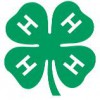 This curriculum was designed for educators to teach young people about where their food originates by using something children love to eat…PIZZA! According to a recent Gallup poll, kids between the ages of 3 and 11 prefer pizza to all other foods for lunch and dinner. Americans eat about 100 acres of pizza each day, or 350 slices per second!This 4-H in the Classroom project, originating in Pinellas County, Florida, was designed for grades 3–5, but can be adapted to serve other grade levels. The lessons cover subject areas such as mathematics, social studies, language arts, and science. It has been used in Pinellas County very successfully since 2000 by the 4-H Program in collaboration with their Florida Ag in the Classroom Initiative. This 89-page fact sheet was written by Janet Golden, Joy Jordan, Nan Jensen, Betty Lipe, Millie Ferrer, Anne Fugate, Erin Karkheck, Linda Bobroff, Karla Shelnutt, and Tracy Tesdall, and published by the UF Department of 4-H Youth Development, November 2014.
This curriculum was designed for educators to teach young people about where their food originates by using something children love to eat…PIZZA! According to a recent Gallup poll, kids between the ages of 3 and 11 prefer pizza to all other foods for lunch and dinner. Americans eat about 100 acres of pizza each day, or 350 slices per second!This 4-H in the Classroom project, originating in Pinellas County, Florida, was designed for grades 3–5, but can be adapted to serve other grade levels. The lessons cover subject areas such as mathematics, social studies, language arts, and science. It has been used in Pinellas County very successfully since 2000 by the 4-H Program in collaboration with their Florida Ag in the Classroom Initiative. This 89-page fact sheet was written by Janet Golden, Joy Jordan, Nan Jensen, Betty Lipe, Millie Ferrer, Anne Fugate, Erin Karkheck, Linda Bobroff, Karla Shelnutt, and Tracy Tesdall, and published by the UF Department of 4-H Youth Development, November 2014.
http://edis.ifas.ufl.edu/4h356
Aquatic and Marine Ecosystems curriculum
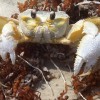 The new Florida 4-H Aquatic and Marine Ecosystems: Leader’s Activity Guide helps leaders address the 4-H Science Initiative and is part of the Environmental Sciences Framework, OUR NATURAL WORLD. This framework includes the basic premise that aquatic/marine environments are important in children’s lives, particularly to those children in Florida. The 4-H Aquatic and Marine Ecosystems curriculum provides an opportunity for young people to practice a variety of life skills while learning marine science concepts. The curriculum also utilizes science inquiry as a way for young people (9-14) to gain a deeper curiosity about the natural world. Written by Karen Blyler and Joy Jordan, and published by the UF Department of 4-H Youth Development, November 2014.
The new Florida 4-H Aquatic and Marine Ecosystems: Leader’s Activity Guide helps leaders address the 4-H Science Initiative and is part of the Environmental Sciences Framework, OUR NATURAL WORLD. This framework includes the basic premise that aquatic/marine environments are important in children’s lives, particularly to those children in Florida. The 4-H Aquatic and Marine Ecosystems curriculum provides an opportunity for young people to practice a variety of life skills while learning marine science concepts. The curriculum also utilizes science inquiry as a way for young people (9-14) to gain a deeper curiosity about the natural world. Written by Karen Blyler and Joy Jordan, and published by the UF Department of 4-H Youth Development, November 2014.
- Introduction
- Lesson 1: Aquatic and Marine Ecosystem Connections
- Lesson 2: Wetland Ecosystems: Freshwater Marshes and Swamps
- Lesson 3: Aquatic Ecosystems: Lakes, Springs, and Rivers
- Lesson 4: Coastal Ecosystems: Beach, Estuary, Marsh, and Swamp
- Lesson 5: Marine Ecosystems: Coral Reefs and Open Ocean
- Appendices: Glossary and Additional Resources
- Facilitator Evaluation
Selecting a Name for Your 4-H Club
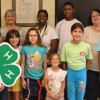 Each 4-H club is a unique group of individuals who work together toward common goals. A club name should reflect the purpose(s) of the club, often relating to the project(s) the club participates in, or the geographic area where members live or the club meets. One of the first ways to develop a sense of belonging and youth engagement is allowing all of the members to participate in selecting a name for the club. Information in this sheet may help you guide the members in making a wise name choice. This 2-page fact sheet was written by Keith G. Diem, Marilyn N. Norman, Joy C. Jordan, and Lindsey McConnell, and published by the UF Department of 4-H Youth Development, July 2014.
Each 4-H club is a unique group of individuals who work together toward common goals. A club name should reflect the purpose(s) of the club, often relating to the project(s) the club participates in, or the geographic area where members live or the club meets. One of the first ways to develop a sense of belonging and youth engagement is allowing all of the members to participate in selecting a name for the club. Information in this sheet may help you guide the members in making a wise name choice. This 2-page fact sheet was written by Keith G. Diem, Marilyn N. Norman, Joy C. Jordan, and Lindsey McConnell, and published by the UF Department of 4-H Youth Development, July 2014.
http://edis.ifas.ufl.edu/4h337
How to Start a Club (for Youth Ages 8–18)
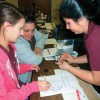 Being in a 4-H club provides important opportunities for youth to learn subject matter and life skills while working with a caring adult and other youth. Once youth are 4-H members, they become eligible for a variety of the benefits of belonging to 4-H, including awards, trips, and special events. Of course, it’s meant to be fun for the kids and the leaders too! Starting a 4-H club isn’t difficult, and you are encouraged to seek help from parents or other volunteers. Local Extension/4-H staff can help you get started. This 4-page fact sheet was written by Keith G. Diem, Joy Jordan, Bryan Terry, Dale Pracht, Judy Butterfield, Adam Cletzer, Lindsey McConnell, and Ben Knowles, and published by the UF Department of 4-H Youth Development, July 2014.
Being in a 4-H club provides important opportunities for youth to learn subject matter and life skills while working with a caring adult and other youth. Once youth are 4-H members, they become eligible for a variety of the benefits of belonging to 4-H, including awards, trips, and special events. Of course, it’s meant to be fun for the kids and the leaders too! Starting a 4-H club isn’t difficult, and you are encouraged to seek help from parents or other volunteers. Local Extension/4-H staff can help you get started. This 4-page fact sheet was written by Keith G. Diem, Joy Jordan, Bryan Terry, Dale Pracht, Judy Butterfield, Adam Cletzer, Lindsey McConnell, and Ben Knowles, and published by the UF Department of 4-H Youth Development, July 2014.
http://edis.ifas.ufl.edu/4h336
Starting and Maintaining 4-H Clubs (4HGCL00/4H281)
 This 16-page guide, intended for 4-H staff and volunteers, provides an overview to the types of clubs, the criteria and forms for chartering a new club, and for maintaining club status annually. It also outlines the fiscal responsibilities of club management and the standards for recognition. Written by J. Jordan, B. Terry, D. Pracht, J. Butterfield, and A. Cletzer, and published by the UF Department of 4-H Youth Development, March 2012.
This 16-page guide, intended for 4-H staff and volunteers, provides an overview to the types of clubs, the criteria and forms for chartering a new club, and for maintaining club status annually. It also outlines the fiscal responsibilities of club management and the standards for recognition. Written by J. Jordan, B. Terry, D. Pracht, J. Butterfield, and A. Cletzer, and published by the UF Department of 4-H Youth Development, March 2012.
http://edis.ifas.ufl.edu/4h281
Florida 4-H Project Leader Guide (4HGCL22/4H316)
Adult volunteers who share knowledge and skills with youth as project leaders and mentors are critical to the success of 4-H. This 20-page guide provides an overview of the standards that guide the development and delivery of 4-H projects. For volunteers new to being a Florida 4-H Project Leader, the contents of this guide cover the basics of elements of 4-H that every project leader should learn. Written by Georgene Bender, Joy C. Jordan, Amanda Thein, Sarah Hensley, and Karen Henry, and published by the UF Department of 4-H Youth Development, March 2011.
http://edis.ifas.ufl.edu/4h316
Investigating the Fungus Among Us: A 4-H Educational Curriculum on Mold (4HHLL70/4H311)
This unit investigates both the benefits and the dangers of mold or mold-based products. By completing the activities in each of the five lessons, youth (grades 5-8) will examine the positive and negative attributes of mold, the conditions that promote mold growth, and how growth can cause illness. They will also learn methods used to deal with mold growth in the home. This 58-page curriculum was written by Jessica Kochert and Joy Jordan, and published by the UF Department of 4-H Youth Development, March 2011.
http://edis.ifas.ufl.edu/4h311
Rabbits, Rabbits, Rabbits: Online Record Books
These online record books familiarize youth with the importance of record keeping as an integral part of project management. By tracking inventory, financial records associated with their project, rabbit health and grooming details, and related information, youth will be well prepared to relate their experiences in a written narrative as part of their project completion activities. Written by Joy Jordan, Loretta Rodriguez, Jessica Kochert, Bill Heltemes, Chris Decubellis, and Renée Gore, and published by the UF Department of 4-H Youth Development, March 2011.
- Pet Rabbit Record Book (4HRAR11/4H319)
http://edis.ifas.ufl.edu/4h319 - Show Rabbit Record Book (4HRAR12/4H320)
http://edis.ifas.ufl.edu/4h320 - Market Rabbit Record Book (4HRAR13/4H321)
http://edis.ifas.ufl.edu/4h321
Florida 4-H Cloverbuds: A Programming Guide for Staff and Volunteers (4HGCL23/4H317)
4-H Cloverbuds, age 5-7, have unique learning characteristics and developmental needs that are different from older members. As a result, the 4-H Cloverbuds program is designed with specific educational objectives and program policies focused on the 5–7 year-old child. This 36-page fact sheet was written by Joy C. Jordan, Kate Fogarty, Tracy Tesdall, and Renée Gore, and published by the UF Department of 4-H Youth Development, March 2011.
http://edis.ifas.ufl.edu/4h317
A Guide to the Florida 4-H Council (4HGCM12/4H315)
A 4-H Council at county, district, and state levels is one of the tools the 4-H Program uses to provide educational experiences for youth. A Council is an elected representative group of 4-H members who meet, discuss, plan, and assist in carrying out 4-H programs and activities in the interest of the total membership. The Council provides links between local clubs or groups and County 4-H Programs, County Programs and District 4-H Programs, and District Programs and State 4-H Programs.
This revised 20-page guide, written by J.A. Rutledge, Joy C. Jordan, Wendi Armstrong, and Tracy Tesdall, includes the consitution, bylaws, annual calendar, and 4-H pledge. Published by the UF Department of 4-H Youth Development, January 2011.
http://edis.ifas.ufl.edu/4h315
4HWLM20/4H290 Bluebirds and Other Cavity-Nesting Birds: Youth Project Book
4HWLM20, a 68-page illustrated project book by Loretta Rodriguez, Jessica Kochert, Joy Jordan, Christina Packard, and Mark Hostetler, helps youth aged 11-13 become careful and knowledgeable observers of bluebirds and other cavity-nesting birds. Youth will learn to create a habitat that promotes the health and safety of local cavity-nesting birds. Finally, the project guides youth to explore and learn about bluebird monitoring and data collecting programs. Includes references. Published by the Florida 4-H Youth Development Program, January 2010.
http://edis.ifas.ufl.edu/4h290
4HWLL30/4H289 Bluebirds and Other Cavity-Nesting Birds: Leader’s Guide
4HWLL30, a 40-page illustrated guide by Loretta Rodriguez, Jessica Kochert, Joy Jordan, Christina Packard, and Mark Hostetler, provides group leaders additional information and group activities to support a bluebird project (4HWLM20). The guide includes ready-to-use skill-a-thon resource materials and facilitator tips for each activity. Includes references. Published by the Florida 4-H Youth Development Program, January 2010.
http://edis.ifas.ufl.edu/4h289
4H5.7/4H257: Tax-Related Procedures for 4-H Clubs and Affiliated Groups
Revised! 4H5.7, a 3-page fact-sheet by Marilyn N. Norman and Joy C. Jordan, details correct tax procedures for 4-H clubs. Includes information on exemptions, receiving donations, state tax, and getting on the IRS list of charitable organizations. Includes references. Published by the Florida 4-H Program, October 2009.
http://edis.ifas.ufl.edu/4H257
4HSFS101.7Spn/4H286 Seleccionando un Nombre para un Club 4-H
4HS-FS101.7-Spn, a 2-page fact sheet by Marilyn N. Norman and Joy C. Jordan, is the Spanish language version of 4HS-FS101.7/4H240 Selecting a Name for a 4-H Club. It describes some considerations to make when selecting a name, and basic decision-making steps clubs can take to choose a name. Published by the UF 4-H Youth Development Program, August 2009.
http://edis.ifas.ufl.edu/4H286
